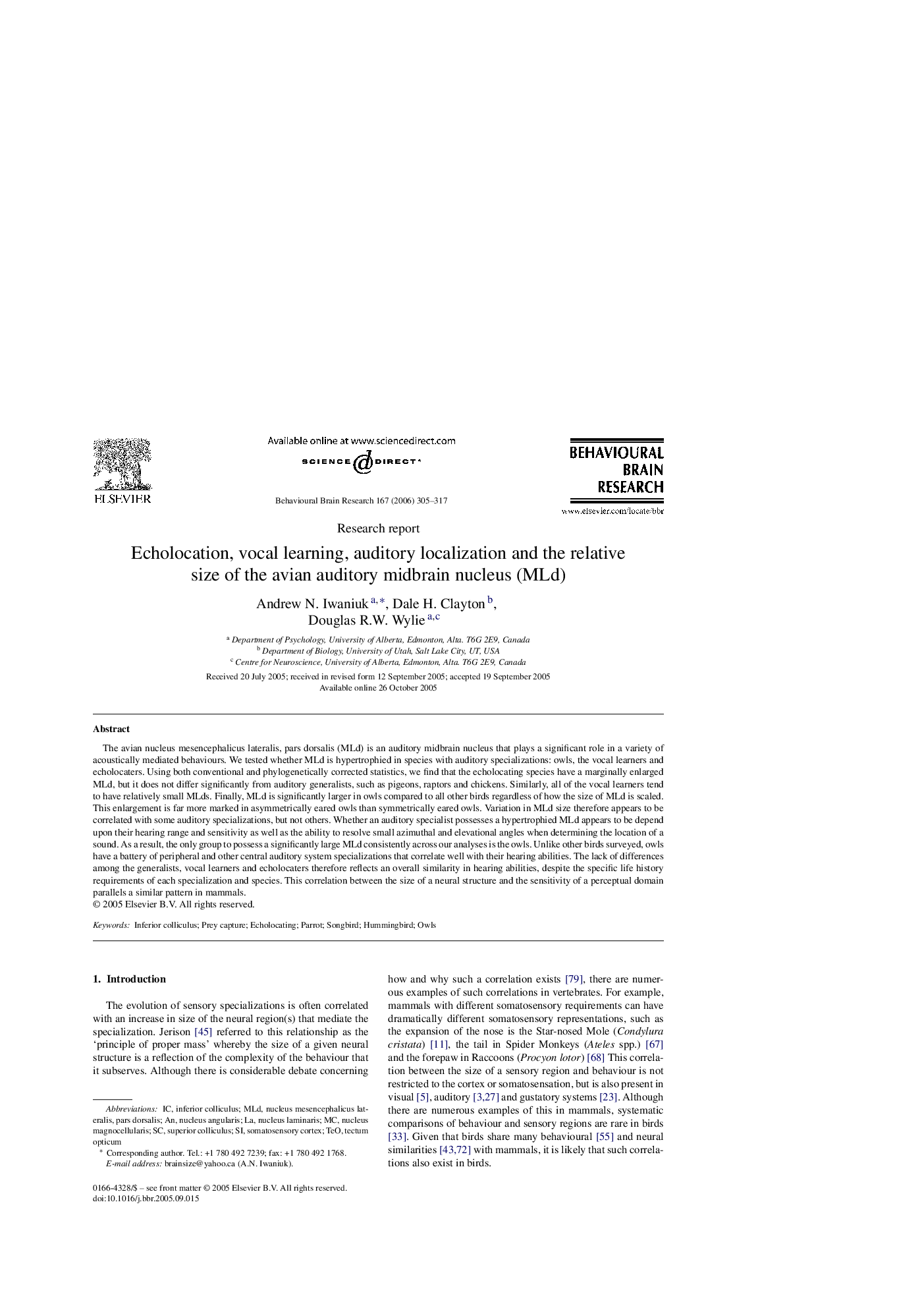| Article ID | Journal | Published Year | Pages | File Type |
|---|---|---|---|---|
| 4316248 | Behavioural Brain Research | 2006 | 13 Pages |
The avian nucleus mesencephalicus lateralis, pars dorsalis (MLd) is an auditory midbrain nucleus that plays a significant role in a variety of acoustically mediated behaviours. We tested whether MLd is hypertrophied in species with auditory specializations: owls, the vocal learners and echolocaters. Using both conventional and phylogenetically corrected statistics, we find that the echolocating species have a marginally enlarged MLd, but it does not differ significantly from auditory generalists, such as pigeons, raptors and chickens. Similarly, all of the vocal learners tend to have relatively small MLds. Finally, MLd is significantly larger in owls compared to all other birds regardless of how the size of MLd is scaled. This enlargement is far more marked in asymmetrically eared owls than symmetrically eared owls. Variation in MLd size therefore appears to be correlated with some auditory specializations, but not others. Whether an auditory specialist possesses a hypertrophied MLd appears to be depend upon their hearing range and sensitivity as well as the ability to resolve small azimuthal and elevational angles when determining the location of a sound. As a result, the only group to possess a significantly large MLd consistently across our analyses is the owls. Unlike other birds surveyed, owls have a battery of peripheral and other central auditory system specializations that correlate well with their hearing abilities. The lack of differences among the generalists, vocal learners and echolocaters therefore reflects an overall similarity in hearing abilities, despite the specific life history requirements of each specialization and species. This correlation between the size of a neural structure and the sensitivity of a perceptual domain parallels a similar pattern in mammals.
